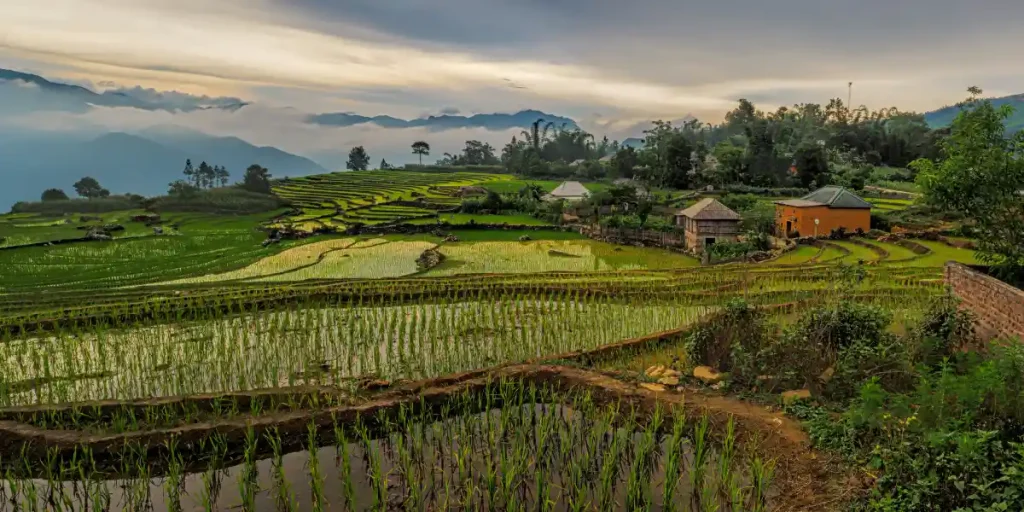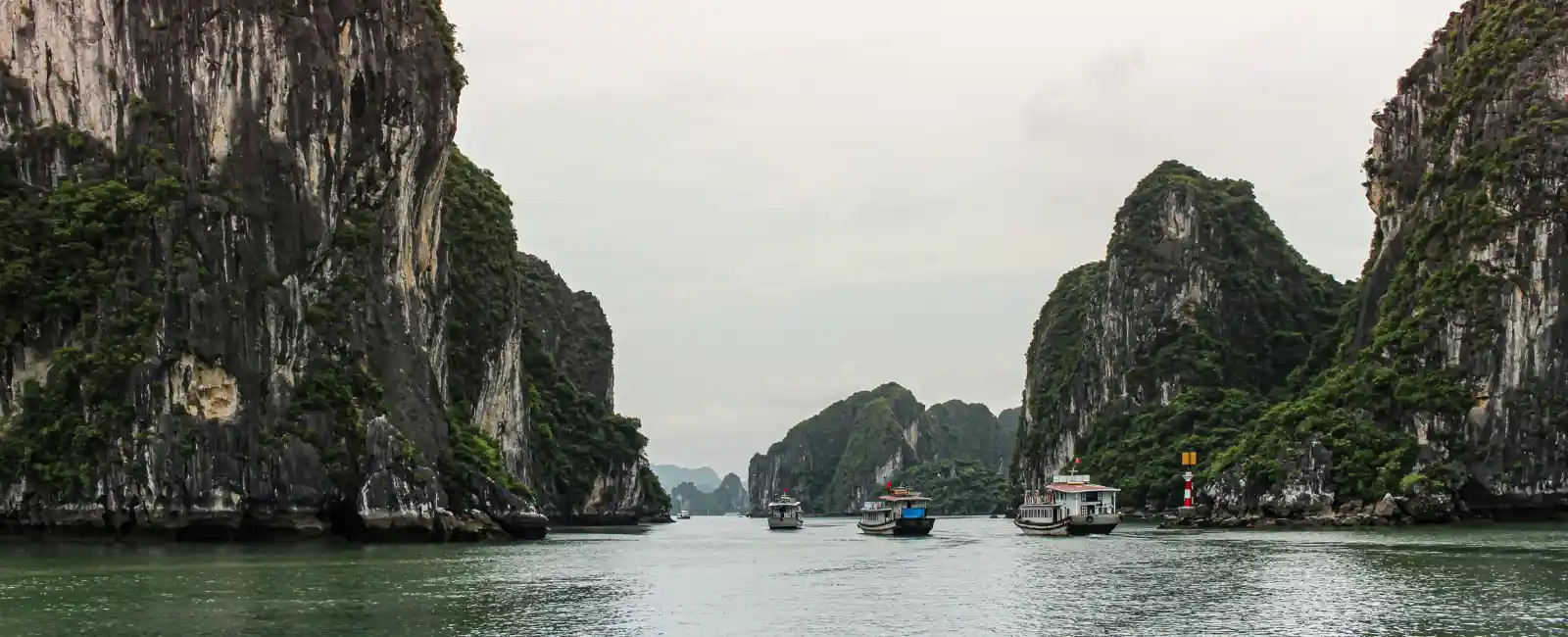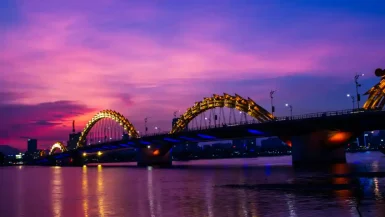Vietnam, a country of captivating beauty, rich history, and vibrant culture, has become an increasingly popular destination for travelers worldwide. From the bustling streets of Hanoi to the serene beaches of Phu Quoc, Vietnam offers an array of experiences that cater to every type of traveler. However, planning a trip to this Southeast Asian gem requires careful consideration of the best time to visit Vietnam. This comprehensive guide will delve into the optimal seasons, weather patterns, and regional variations to help you make the most out of your Vietnamese adventure.
Understanding Vietnam’s Climate
Before diving into the best time to visit Vietnam, it’s essential to understand the country’s diverse climate. Vietnam spans over 1,000 kilometers from north to south, resulting in distinct climatic zones. Generally, the country experiences three main weather patterns: the north, the central region, and the south.
Northern Vietnam
Northern Vietnam, including Hanoi, Ha Long Bay, and Sapa, experiences four distinct seasons. Winter (November to February) can be quite chilly, especially in mountainous areas like Sapa, where temperatures can drop to near freezing. Spring (March to May) and autumn (September to October) are mild and pleasant, with temperatures ranging from 15°C to 25°C. Summer (June to August) is hot and humid, with temperatures often exceeding 30°C.
Central Vietnam
Central Vietnam, encompassing cities like Da Nang, Hoi An, and Hue, has a more tropical climate. This region experiences a wet season from September to December, characterized by heavy rainfall and occasional typhoons. The dry season runs from January to August, with temperatures ranging from 25°C to 35°C. However, the hottest months are June and July, when temperatures can soar above 35°C. During these peak summer months, it’s advisable to stay hydrated and take breaks in shaded or air-conditioned areas. The coastal areas offer a refreshing respite with cool sea breezes. Additionally, the vibrant festivals and cultural events during the dry season attract many visitors. Planning a trip during these months also provides an opportunity to experience the local way of life. Moreover, the region’s culinary delights, especially in Hoi An and Hue, are best enjoyed when the weather is favorable.
Southern Vietnam
Southern Vietnam, including Ho Chi Minh City and the Mekong Delta, has a tropical climate with two primary seasons: wet and dry. The wet season lasts from May to November, bringing heavy rains and high humidity. The dry season, from December to April, is characterized by warm and sunny weather, with temperatures averaging around 30°C.
The Best Time to Visit Vietnam
Given the diverse climate across the country, determining the best time to visit Vietnam depends on the specific regions you plan to explore. Below, we break down the optimal travel periods for each region and highlight some key attractions to consider. By understanding the distinct weather patterns and seasonal variations, you can tailor your itinerary to maximize your experience. Additionally, each region offers unique cultural events and festivals that can enhance your visit. Whether you’re interested in trekking in the northern mountains, enjoying the central coast’s beaches, or exploring the vibrant southern cities, planning ahead is crucial. With this comprehensive guide, you’ll be well-equipped to decide the best time to visit Vietnam for your adventure.
Best Time to Visit Northern Vietnam
Spring (March to May)
Spring is arguably the best time to visit Northern Vietnam. During this period, the weather is mild, with temperatures ranging from 15°C to 25°C. The landscape bursts into bloom, making it an ideal time for outdoor activities and sightseeing. Hanoi, the capital city, offers a delightful mix of ancient temples, colonial architecture, and vibrant street markets. Don’t miss a cruise on Ha Long Bay, where you can explore the stunning limestone karsts and emerald waters.
Autumn (September to October)
Autumn is another excellent time to visit Northern Vietnam. The weather is cool and dry, providing perfect conditions for trekking in Sapa’s terraced rice fields or exploring the picturesque town of Ninh Binh. Autumn also brings the Mid-Autumn Festival, a traditional celebration featuring colorful lanterns, lion dances, and mooncakes. This cultural experience adds a unique charm to your visit.
Best Time to Visit Central Vietnam
February to May
The period from February to May is the best time to visit Central Vietnam. The weather is warm and dry, with temperatures ranging from 25°C to 30°C. This season is perfect for beach lovers, as the coastal cities of Da Nang and Nha Trang offer pristine beaches and crystal-clear waters. Additionally, the charming town of Hoi An, known for its well-preserved ancient town and lantern-lit streets, is a must-visit destination.
August
Although August falls within the summer months, it’s still a favorable time to visit Central Vietnam, particularly if you’re interested in the beach destinations. The weather is hot but manageable, and you can enjoy various water activities and festivals, such as the Da Nang International Fireworks Festival, which features spectacular pyrotechnic displays from teams around the world.
Best Time to Visit Southern Vietnam
December to April
The best time to visit Southern Vietnam is during the dry season, from December to April. The weather is warm and sunny, with temperatures averaging around 30°C. Ho Chi Minh City, the bustling economic hub of Vietnam, offers a blend of historical landmarks, modern skyscrapers, and vibrant nightlife. The Mekong Delta, known for its lush landscapes and intricate waterways, is also best explored during this period. Additionally, the island of Phu Quoc, with its white sandy beaches and clear waters, is a tropical paradise during the dry season.
Special Considerations for Visiting Vietnam
While the aforementioned periods highlight the best time to visit Vietnam based on weather conditions, there are other factors to consider when planning your trip.
Festivals and Events
Vietnam boasts a rich cultural heritage, and its festivals and events are an integral part of the travel experience. Planning your visit around these celebrations can add a unique dimension to your trip.
Tet (Lunar New Year)
Tet, or the Lunar New Year, is the most significant festival in Vietnam. It usually falls between late January and early February. Tet is a time for family reunions, traditional rituals, and vibrant celebrations. Although many businesses close during Tet, the festive atmosphere, street decorations, and fireworks make it a memorable time to visit.
Hue Festival
The Hue Festival, held biennially in April, showcases the cultural heritage of Hue, the former imperial capital of Vietnam. The festival features traditional music, dance performances, and historical reenactments, offering visitors a glimpse into Vietnam’s royal past.
Hoi An Lantern Festival
The Hoi An Lantern Festival takes place on the 14th day of each lunar month in the ancient town of Hoi An. During the festival, the town transforms into a magical scene with colorful lanterns illuminating the streets and river. It’s a beautiful sight and a great opportunity to immerse yourself in local traditions.
Avoiding Peak Tourist Seasons
To make the most of your trip, it’s essential to consider the peak tourist seasons in Vietnam. The best time to visit Vietnam often coincides with the peak tourist periods, leading to crowded attractions and higher prices. To avoid the crowds, consider traveling during the shoulder seasons, which fall just before or after the peak periods.
Shoulder Seasons
For Northern Vietnam, the shoulder seasons are late February to early March and late September to early October. In Central Vietnam, consider visiting in late January or early February and late August to early September. For Southern Vietnam, late November to early December and late April are ideal shoulder seasons.
Exploring Vietnam by Region
Vietnam’s diverse regions offer unique experiences and attractions. Let’s delve deeper into what each region has to offer, ensuring you make the most of your visit during the best time to visit Vietnam.
Northern Vietnam
Hanoi
Hanoi, the capital city, is a blend of ancient history and modern vibrancy. Visit the Old Quarter, where narrow streets bustle with local vendors and traditional shops. Explore the Hoan Kiem Lake, a tranquil oasis in the city’s heart. Don’t miss the Ho Chi Minh Mausoleum, where the revered leader’s embalmed body is displayed.
Ha Long Bay
A UNESCO World Heritage Site, Ha Long Bay is renowned for its stunning limestone karsts and emerald waters. Take a cruise through the bay, explore hidden caves, and enjoy water activities like kayaking and swimming. The best time to visit Ha Long Bay is during spring and autumn when the weather is calm and clear.

Sapa
Sapa, located in the northern highlands, offers breathtaking landscapes of terraced rice fields and lush valleys. Trekking in Sapa is a popular activity, allowing you to immerse yourself in the natural beauty and visit ethnic minority villages. The best time to visit Sapa is during autumn, when the rice fields turn golden, creating a picturesque setting.Find out more about Vietnamese highlands.
Central Vietnam
Hoi An
Hoi An, a UNESCO World Heritage Site, is famous for its well-preserved ancient town. Stroll through lantern-lit streets, visit historic buildings, and indulge in delicious local cuisine. The best time to visit Hoi An is from February to May, when the weather is pleasant for exploring the town and nearby beaches.
Hue
Hue, the former imperial capital, is steeped in history and culture. Visit the Imperial City, a vast complex of palaces, temples, and gardens. Explore the royal tombs along the Perfume River, each showcasing unique architecture and design. The Hue Festival, held biennially, is an excellent time to experience the city’s rich heritage.
Da Nang
Da Nang is known for its beautiful beaches, vibrant nightlife, and modern attractions. Relax on My Khe Beach, visit the Marble Mountains, and take a stroll along the Han River. The period from February to May is the best time to visit Da Nang, as the weather is ideal for beach activities and sightseeing.
Southern Vietnam
Ho Chi Minh City
Ho Chi Minh City, also known as Saigon, is a bustling metropolis with a mix of old and new. Visit the War Remnants Museum to learn about Vietnam’s history, explore the bustling Ben Thanh Market, and enjoy the vibrant nightlife. The dry season, from December to April, is the best time to visit Ho Chi Minh City.
Mekong Delta
The Mekong Delta, often referred to as the “Rice Bowl” of Vietnam, is a fertile region with a network of rivers, canals, and swamps. Take a boat tour through the delta, visit floating markets, and explore the lush countryside. The best time to visit the Mekong Delta is during the dry season, when the weather is pleasant for outdoor activities.
Phu Quoc
Phu Quoc, Vietnam’s largest island, is a tropical paradise with pristine beaches and clear waters. Relax on Long Beach, visit the Phu Quoc National Park, and explore the vibrant night market. The dry season, from December to April, is the best time to visit Phu Quoc, ensuring sunny days and calm seas.
Practical Tips for Visiting Vietnam
To make your trip to Vietnam smooth and enjoyable, consider these practical tips:
Visa Requirements
Check the visa requirements for your nationality before traveling to Vietnam. Many countries are eligible for a visa exemption or e-visa, making the process convenient.
Currency and Payment
The official currency is the Vietnamese Dong (VND). While credit cards are accepted in major cities, it’s advisable to carry cash for transactions in smaller towns and markets.
Local Cuisine
Vietnamese cuisine is renowned for its fresh ingredients and bold flavors. Don’t miss trying pho (noodle soup), banh mi (Vietnamese sandwich), and fresh spring rolls. Street food stalls offer authentic and affordable dining experiences.
Transportation
Vietnam has a well-developed transportation network, including buses, trains, and domestic flights. Consider using ride-hailing apps like Grab for convenient transportation within cities.
Language
While Vietnamese is the official language, English is widely spoken in tourist areas. Learning a few basic Vietnamese phrases can enhance your travel experience and help you connect with locals.
Conclusion
In conclusion, determining the best time to visit Vietnam requires understanding the country’s diverse climate and regional variations. Whether you’re exploring the historical sites of Hanoi, cruising through the stunning landscapes of Ha Long Bay, or relaxing on the beaches of Phu Quoc, planning your trip during the optimal seasons ensures a memorable and enjoyable experience. Consider the weather patterns, festivals, and shoulder seasons to make the most of your Vietnamese adventure. With its rich culture, breathtaking scenery, and warm hospitality, Vietnam promises an unforgettable journey for every traveler.



